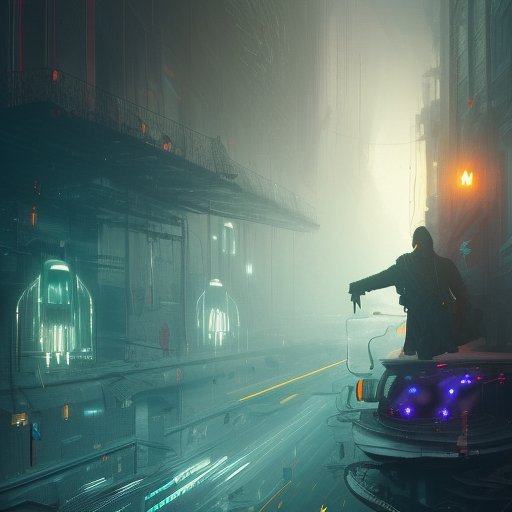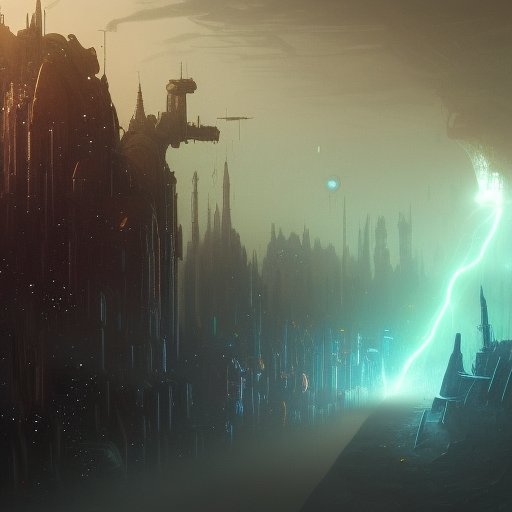
In a world where AI reigns supreme, cybersecurity has become our defense against an inevitable apocalypse. Centralization has created a breeding ground for cyber hackers, threatening the very foundation of our technological age. This article explores the pros and cons of big data, questions the ethics of cyber policy, and delves into the lessons of history’s technological downfalls. Set against the backdrop of future advancements, we examine the importance of cybersecurity infrastructure and quantum mechanics, exploring the future of technology while preparing for the next frontier. With nanobots and teleportation on the horizon, the fate of humanity lies in our preparedness for the ultimate battle: cybersecurity threats beyond our wildest imaginings.
I. Introduction
When we think of the future, we picture flying cars, teleportation, and AI that can predict our every move. But what we often forget is that this future is reliant on one fundamental facet: cybersecurity. Without proper protection, our technological advancements are like a house of cards, destined to collapse at the slightest hiccup in the system. And make no mistake — the hackers are coming.

Centralization has created a breeding ground for cyber criminals, who lurk in the shadows waiting to pounce on vulnerabilities in our systems. But as we look to the future, it’s not just anonymous hackers we need to worry about. The dangers of cyber warfare between nations, as depicted in films like WarGames and Hackers, is no longer just science fiction — it’s a harsh reality that we face.
In this article, we’ll explore the impact that cybersecurity, or the lack thereof, could have on our technological age. We’ll delve into the pros and cons of big data, considering how it could be both a driving force for progress and a key weakness in our infrastructure. We’ll also consider the ethical considerations required in crafting cybersecurity policy, and the lessons that history’s technological downfalls can teach us about preparing for the future.
As we move forward, we’ll also examine the role of quantum mechanics and the future of cyber threats, from nanobots to teleports, and the importance of cybersecurity infrastructure as we explore the next frontier. Because, in the end, while we may dream of lightspeed travel and galactic exploration, the truth is that the fate of our technological age rests on something far less glamorous: our preparedness for the ultimate battle against cyber threats beyond our wildest imaginings.
II. The Pros and Cons of Centralization
In a world where information is power, big data reigns supreme. The centralized system of data storage and processing has revolutionized everything from healthcare to shopping, creating a world where efficiency and convenience are king.
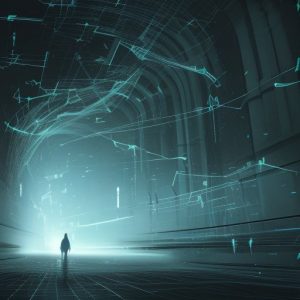
But with great power comes great responsibility, and the size of big data presents a major vulnerability. In a world where cyber criminals are becoming more sophisticated, and the risk of data breaches and hacking attacks is on the rise, centralization may be our technological Achilles’ heel.
On the one hand, centralization offers numerous benefits. It allows for easier access to information, simplifies data processing, and enables greater efficiency across industries. It also allows for easier implementation of cybersecurity infrastructure, and easier tracking of potential threats.
But on the other hand, centralization also means that if one system goes down, an entire network could collapse like dominos. In addition to the risk of cyber attacks, there’s also the matter of data privacy and ownership. Who truly owns the data that is collected?
Furthermore, the concentration of data in large corporations or government entities means that these players have an outsized influence on society. They have the power to shape policies, steer elections, and manipulate cultural attitudes. It’s a level of surveillance that was once only dreamed of in dystopian sci-fi stories.
So, the question is: is big data getting too big for its own good? Are we putting all our technological eggs in one basket, leaving ourselves open to catastrophic failures and cyber attacks? Or, do the benefits of centralization outweigh the risks? In the following sections, we’ll explore the impact of centralization on cybersecurity and consider whether the cons of big data outweigh the pros as we move deeper into a technological future.
III. Cashing in on the Apocalypse
As we explore the vulnerabilities of our interconnected world, one threat looms larger than the rest: cyber hackers. Unchecked, they could spell disaster for our technological age. And while some may dismiss cyber threats as just another sci-fi trope, the reality is that they pose a very real danger to our society.

The fact of the matter is that, in the wrong hands, cyber attacks could be devastating. As we’ve seen in films like The Matrix and Watch Dogs, entire cities could be plunged into chaos at the click of a button. And as society becomes ever-more interconnected, the potential consequences of a large-scale attack only grow.
Worryingly, some hackers are actually motivated by profit, using the chaos of a cyber attack to cash in on the apocalypse. By infiltrating key systems and demanding payment from their victims, they hold our society ransom. And experts predict this will only get worse as we move into the future, with hackers developing ever-more sophisticated methods of attack.
But it’s not just the financial cost that we need to be concerned about. The personal information of countless individuals is stored online, from bank details to social security numbers. The consequences of sensitive information falling into the wrong hands are dire, and it’s a risk that we need to take very seriously.
As we chart our course through the technological age, we need to be acutely aware of these threats. We need to be proactive in our protection, and remain vigilant for signs of malicious activity. For as dystopian as it may seem, the reality is that cyber threats could well make or break our technological age.
IV. Protecting Our Collective Investment
We’ve all heard the phrase “an ounce of prevention is worth a pound of cure.” And when it comes to cybersecurity, that couldn’t be more true. The global digital economy is estimated to be worth over $11 trillion, and with the rise of AI and emerging technologies, that number is only set to grow. So the importance of protecting this collective investment cannot be overstated.
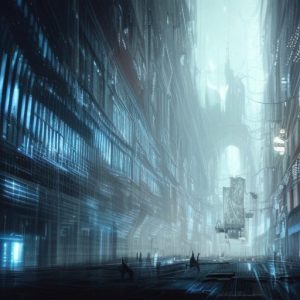
At the heart of cybersecurity infrastructure lies the concept of defense in depth, or utilizing multiple layers of protection to guard against cyber threats. These layers can range from firewalls and antivirus software to intrusion detection systems and encryption. But in today’s landscape, it’s not just enough to have a solid defense system in place. Human error, through phishing scams or password negligence, can be just as risky as a well-crafted virus.
To combat this, organizations need to establish a culture of cybersecurity, where every employee is educated on the risks and consequences of cyber threats. This can include regular training sessions, implementing strong password protocols, and fostering a sense of responsibility towards maintaining the security of the entire system.
But it’s not just businesses that need to be proactive when it comes to cybersecurity infrastructure. The government plays a crucial role in regulating the digital landscape and ensuring the safety of its citizens’ personal data. Regulations like the General Data Protection Regulation (GDPR) in Europe and the California Consumer Privacy Act (CCPA) have already set the bar for data protection laws.
As we venture into the future, the importance of cybersecurity infrastructure will only increase. Emerging technologies like quantum computing will require entirely new methods of encryption, while advancements in biometric security are already paving the way for even stronger identification protocols. But through collaboration between businesses, government entities, and individuals, we can create a robust cybersecurity infrastructure that protects our collective investment and preserves the technological age for generations to come.
V. Preventing a Black Mirror Dystopia
But as we work to create the best cybersecurity infrastructure possible, another major consideration must be made: ethics. It’s easy to get lost in the technological advancements we’re achieving, but we must not forget the moral implications of these advancements.

In our world of centralized data, individual privacy is easily compromised, as anyone with an internet connection can find out our best-kept secrets. But at what point does cybersecurity become a violation of privacy? And what happens to the trust between individuals and institutions once privacy has been violated?
Furthermore, as AI and machine learning become more integrated into our cybersecurity systems, questions arise about the ethical implications of these systems. Will they be used for good, or will they become totalitarian tools used to maintain control over the populace?
We must also consider the ethical ramifications of cyber warfare between nations. What actions are justifiable in the face of a cyber attack, and how do we ensure that our defense tactics don’t escalate the conflict? These are difficult questions, but ones that we can’t ignore as we look to create a better future.
Ultimately, the future of cybersecurity must be grounded in a strong ethical framework. One where individual privacy is respected and defended, where AI and machine learning are used for the betterment of society, and where cyber warfare is avoided through diplomatic means. With so much at stake, we must not let our technological advancements outpace our moral obligations.
VI. Looking to the Past to Inform the Future
To prepare for the technology-driven future of today, we must look back and learn from the failures of the past. There’s no shortage of cautionary tales, from the fall of Rome to the infamous Y2K bug. But perhaps the most relevant example is the way humanity has navigated the world of computers and hacking.

In the 1983 film WarGames, protagonist David Lightman almost accidentally sparks World War III when he unknowingly gains control of a government supercomputer. This film, along with the classic 1995 film Hackers, showed us just how dangerous the convergence of technology and criminal intent could be.
But the risks of cybersecurity go far beyond just hackers. In the late 1980s, the Morris worm shut down computers across the United States, highlighting the importance of early detection and rapid response to cyber threats. More recently, the WannaCry ransomware attack made headlines when it infected computers across the world, causing billions of dollars in damage.
The key takeaway from these moments in history is the importance of cybersecurity infrastructure that can withstand the inevitable attacks to come. Rather than waiting for catastrophe to strike, we must proactively build systems and protocols that are designed to protect against cyber threats.
Of course, there are ethical considerations to be made in this process as well. We must consider everything from data privacy to the impact of AI on our workforce. But ultimately, our understanding of the past and our ability to apply those lessons will be the difference between a thriving technological age and a dystopian future. So let’s not make the same mistakes again. Let’s learn from history, and ensure that our future is a bright one.
VII. Quantum Mechanics and the Future of Cybersecurity
As we look to the future, it’s impossible to ignore the increasingly sophisticated threats posed by cyber criminals. But luckily, we’re not helpless in the face of these challenges.

Enter quantum mechanics, a field that has the potential to revolutionize the way we approach cybersecurity. Quantum mechanics, which studies the behavior of particles on a subatomic level, has the ability to create unhackable encryption. By using the properties of quantum mechanics, we could, in theory, create a key that could only be unlocked by the intended recipient — and could never be intercepted by nefarious third parties.
But that’s not all. Quantum mechanics also allows us to detect intruders in our systems with unprecedented accuracy. This is because, at the subatomic level, a particle’s state can be both altered and observed at the same time, leading to quantum-based intrusion detection systems that are both accurate and efficient.
Of course, there are still challenges to be overcome. Quantum computing, which is required for these quantum security systems to function, is still in its infancy, and scientists are still working to develop ways to effectively scale and integrate these technologies into our existing infrastructure.
But with the stakes as high as they are, it’s clear that we need to invest in these technologies if we want to ensure the longevity and sustainability of our technological age. By making use of cutting-edge advancements in quantum mechanics, we have the potential to create a safer and more secure technological landscape, one that is not just resistant to cyberattacks but impervious to them.
So while we may still be a ways off from achieving true quantum security, it’s important to recognize the immense potential that this technology holds — and the role that it will play in shaping the future of cybersecurity for generations to come.
VIII. Cybersecurity in the Age of Nanobots and Teleportation
As we hurtle towards a future of nanobots and teleportation, it’s clear that cybersecurity will be more important than ever. With the potential for instantaneous travel and information sharing, the stakes are higher than ever before.
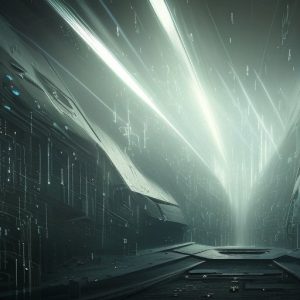
One key area of concern is biometric data. As we begin to rely on cyber implants for everything from identification to payments, the potential for hacking only increases. How can we ensure that these implants are secure, and that our biometric data remains safe from prying eyes?
Another area to consider is the impact of advancements like nanobots on our infrastructure. With tiny machines capable of carrying out complex tasks, the potential benefits are immense. But as with any new technology, there are risks. What happens if these nanobots are hacked or reprogrammed, leading to unintended consequences?
As we explore the next frontier of technology, it’s clear that cybersecurity must be a top priority. We must be prepared to address the challenges posed by technologies like quantum mechanics and the Internet of Things, as well as new and unforeseen threats that may arise.
But it’s not just about technology — it’s about people too. We must ensure that the architects of our technological future are well-versed in the principles of cybersecurity, and that they are equipped with the knowledge and tools to keep our systems safe.
And perhaps most importantly, we must recognize that the battle against cyber threats is ongoing. There is no silver bullet that will provide ultimate protection. Instead, we must remain vigilant and committed to continuing to evolve our cybersecurity strategies, even as the tech we’re protecting becomes more advanced.
In the end, the success of our technological age will ultimately hinge on our ability to protect it from those who would seek to do us harm. Whether it’s through quantum encryption or the latest cybersecurity measures, we must remain steadfast in our commitment to creating a safe and sustainable future for all.
